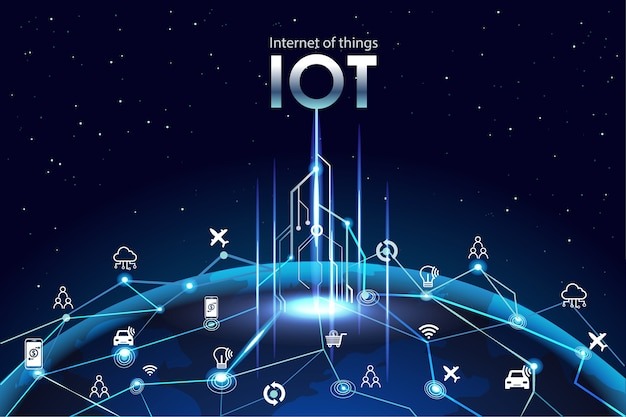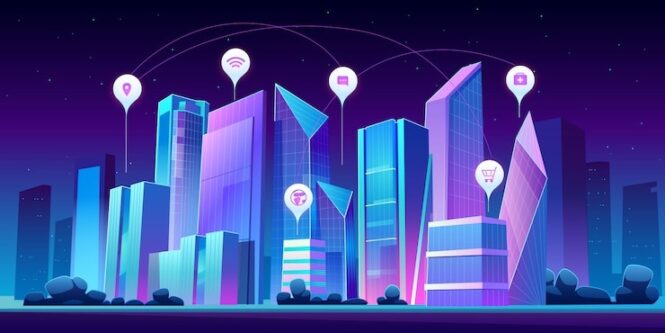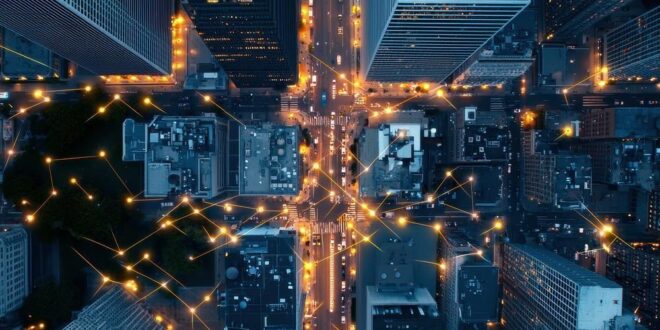Cities face immense challenges serving growing populations with limited budgets and aged infrastructure. Internet of Things (IoT) smart city solutions provide new ways to maximize limited resources while improving citizen lives.
The people at Blues IoT explain that connected sensors, data analytics, and automated systems optimize energy, mobility, operations, and experiences across dense urban environments. Integrating intelligent technologies into the fabric of cities protects the earth while guiding growth. The innovation transforms cities into thriving, sustainable habitats.
Saving Energy Across Systems

Buildings account for over 70% of electricity used by leading cities annually. Most structures rely on dated electrical and HVAC equipment designed for a different era. Smart building energy management uses cloud-connected sensors and controls to continuously optimize usage. When rooms are vacant, the lights will dim, reducing energy consumption. On hot days, smart glass windows have the ability to tint, which helps to prevent heat from entering. Automated climate systems throttle down temperatures, when possible, without compromising comfort. Operational changes cascade across hundreds of buildings to conserve electricity, especially during costly peak demand times. Stadiums full of fans barely notice carefully choreographed energy reductions happening behind the scenes.
Intelligent street lighting similarly adjusts output dynamically based on traffic and pedestrian patterns. Sensors report local conditions, so control centers brighten routes ahead of predicted demand then dim again once areas clear. The responsive illumination improves safety exactly when and where citizens need it without wasting tax dollars lighting empty roads. Adaptive signals also monitor traffic flows to optimize waiting times at intersections. Together the adjustments cut miles driven hunting for parking and idling in congestion leading to less pollution.
Managing Essential Resources in Real-Time
Cities rely on vast infrastructure networks to handle massive inbound local consumption of water, fuel energy and more. Historically, usage estimates derived from sporadic manual meter reads led to forecasting errors and excess expenses. Now cheap IoT sensors monitor reservoir levels, pipe flows and processing equipment that enable real-time optimization. Predictive analytics balance facility loads minimizing strain on aging machinery. Automated controls activate equipment preemptively before demand spikes hit to avoid shortages. Mayors even receive alarms on phones if critical systems risk disruption so staff can respond rapidly. The modern visibility and agility stretches resources farther reducing waste and costly failures.
IoT water conservation applications help arid cities struggling with droughts. Leak detectors located along miles of buried pipes alert authorities to growing underground water losses early before surface indications appear. Pressure modulators reduce flows entering buildings safely below levels that stress flawed pipe joints without degrading indoor performance. Residents receive smartphone notifications encouraging reduced shower times or delayed lawn watering when supplies run low, avoiding restrictive bans. The creative flexibility helps meet needs even when reservoirs empty faster than rains refill them.
Empowering Data-Driven Decisions

Urban leaders face constant pressure to deliver citizen services on tight budgets. Smart city innovations transform data into insights guiding officials making high-impact choices. Noise meters survey acoustic impacts from entertainment venues on surrounding homes and new transit lines. Crowd trackers monitor pedestrian and vehicle density to optimize everything from police patrols to park maintenance. Low-cost pollution monitors check air quality block-by-block allowing pinpointed remediation like rerouting diesel trucks on high pollen days when children are walking to school. Everything connects feeding details to digital dashboards.
The visibility aids long-term planning too. Urban modelers integrate data citywide on commuting modes, facility ages, flooding rainfall measurements and other infrastructure health indicators. Multi-year models simulate funding scenarios and impact projections guiding maintenance. Analyses inform rebuilding neglected neighborhoods first before issues compound. Data exposing inequities also direct investments toward communities with the greatest needs. The modeling illuminates optimal timelines supporting gradual upgrades as budgets allow.
Improving Mobility and Safety
Mobility data gives transportation planners eyes on ground truth. Traffic counting sensors classify vehicle types at thousands of road segments revealing usage patterns. The details help cities place bike and scooter lanes judiciously without worsening car congestion and emissions. Other systems track parking availability, so drivers can avoid fruitless hunting wasting gas and patience. In-pavement occupancy detectors also signal smart meters when departing cars free up premium spaces. Linkage analysis shows where added public transit lines will alleviate the most private auto trips. Planners enhance multimodal transit access for underserved areas, reducing reliance on personal cars.
Public safety also advances with citywide sensor networks. Gunshot detection microphones instantly triangulate incident locations faster than 911 reports. Flood instrumentation checks rivers and canals diverting flows before surrounding neighborhoods require evacuation. Algorithms comb through surveillance footage for suspicious unattended packages or criminal behaviors as an extra observer protecting people. When disasters strike, monitors provide rapid damage assessments so first responders dispatch aid efficiently. And post-event sensor readings help prioritize infrastructure rebuilds.
Enabling Responsible Data Usage

As cities collect increasing amounts of data on citizens, infrastructure, services and more, policies ensure responsible handling. Security frameworks guard private details like health metrics from air quality sensors. Aggregated reporting preserves anonymity when exposing trends. Cities allow residents to opt-out of certain tracking programs and access their own records. Strict protocols prohibit selling information or usage for advertising without explicit permissions. Advisory boards oversee data ethics that prevent potential overreach or biases as programs expand. The governance protects individuals while enabling smart cities to gather necessary visibility on systems for the greater good.
Conclusion
The innovation momentum accelerates as pioneering cities pilot test solutions. Eventually, intelligent technologies meld into urban background fully integrated across infrastructure operations. But even today’s smart pilots demonstrate cleaner, more responsive, more equitable and ultimately more enjoyable metropolitan living environments growing out of connected technologies. Early data quantifies benefits like 25% drops in traffic deaths, 30-50% energy savings or 60% plunge in pipe leakage for just fractions of traditional infrastructure budgets. The success stories encourage followers. With billions moving into cities in coming decades, the models guide sustainable engineering for the massive growth. Smart cities are designed to improve the quality of life for citizens now and to protect the resources and environment that are essential for the well-being of future generations.
 Imagup General Magazine 2025
Imagup General Magazine 2025



